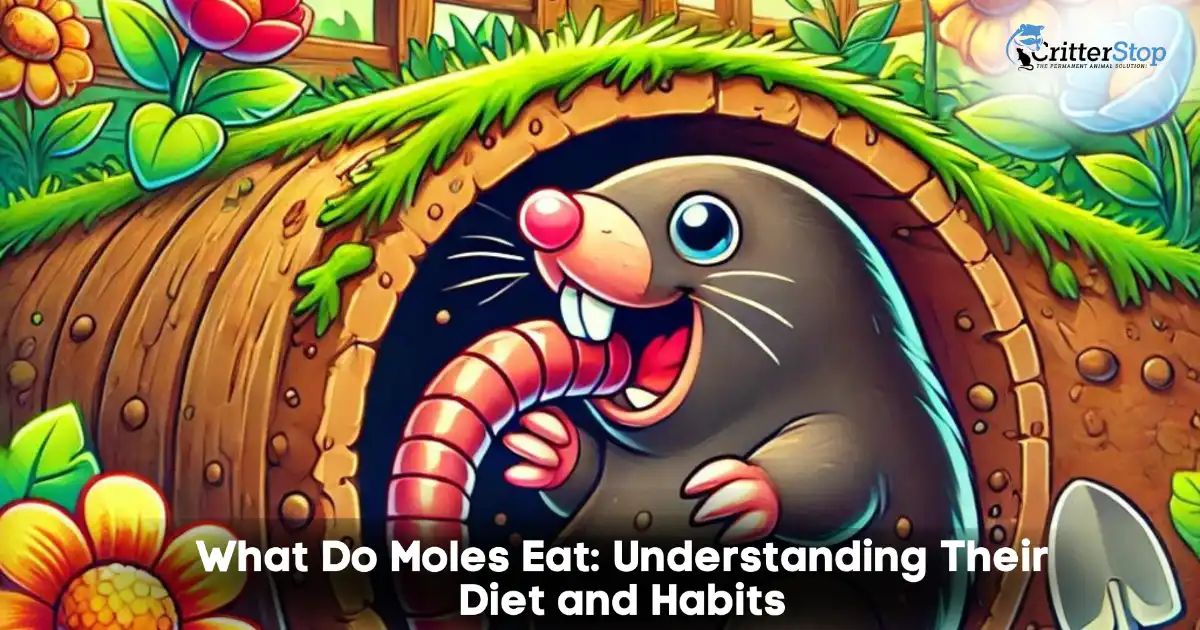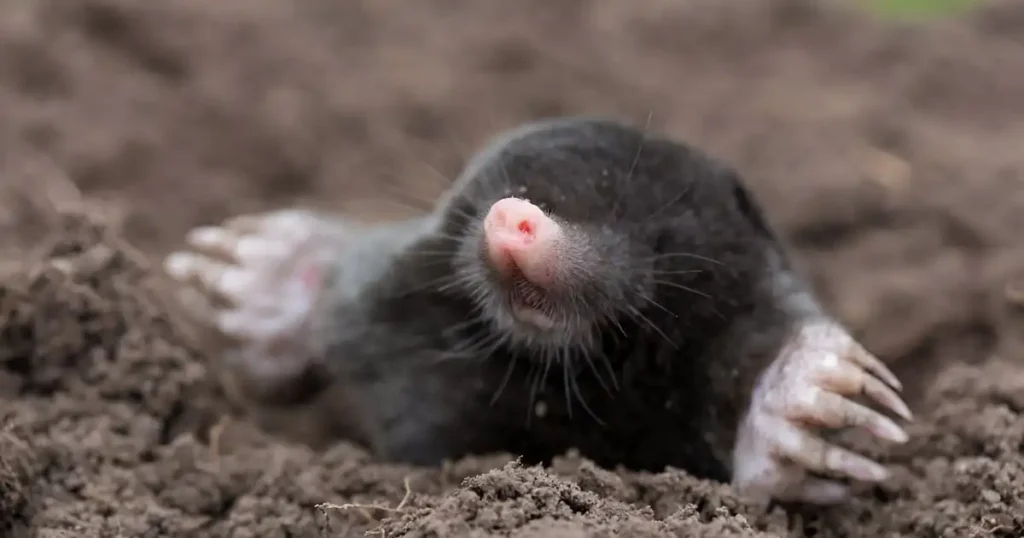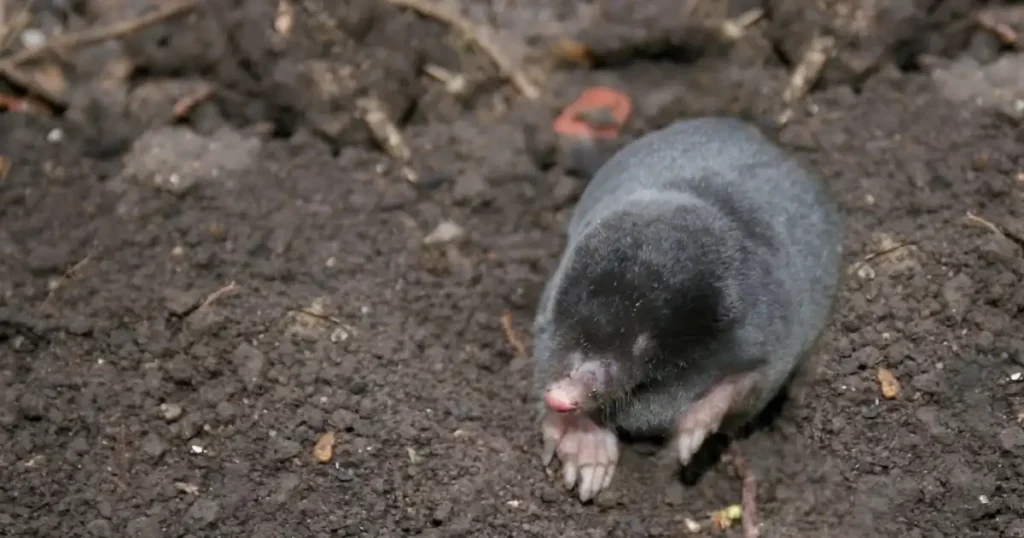
Moles are fascinating creatures that inhabit gardens, lawns, and fields. They primarily feed on insects, earthworms, and, occasionally, the roots of plants, making them crucial for soil health. Understanding their diet can provide insight into how they interact with the ecosystem and how to manage their presence in residential areas.
These small mammals are known for their burrowing habits, which can create issues for gardeners and landscapers. Moles consume large quantities of food, with some estimates suggesting they eat up to 100% of their body weight daily. This insatiable appetite is driven by their high metabolism and the need to maintain energy for continuous digging.
By exploring what do moles eat, the reader can better appreciate their role in the environment and the implications of having them nearby. This knowledge can also inform strategies for coexistence or management based on the specific dietary preferences of these underground dwellers.
Moles have a specialized diet primarily consisting of insects and other small invertebrates. Their feeding habits reflect a strong preference for certain food sources that cater to their nutritional needs.
Moles mainly consume earthworms, which are a staple in their diet due to their high protein content. Research indicates that earthworms can comprise up to 80% of a mole's diet. Additionally, they may eat grubs, including larval forms of various beetles.
Moles also target insects such as ants and termites. They forage by tunneling through soil, using their sensitive snouts to detect and capture prey. The ability to locate food underground helps them thrive in their natural habitats.
Moles have distinct dietary preferences influenced by their environment. They show a strong inclination towards soil-dwelling organisms, primarily because these are readily accessible.
Despite having a diverse diet, moles do not primarily consume plant material; their feeding habits are mostly carnivorous. This focused dietary requirement drives them to dig extensive tunnel systems that serve as their foraging ground.

Moles are specialized feeders with unique hunting and foraging techniques. Their diet primarily consists of invertebrates, though moles eat plants as well, and they have specific needs during their early life stages.
Moles primarily hunt underground, utilizing their keen sense of smell to locate prey. Moles are known for their digging prowess, creating extensive tunnel systems that help them navigate and find food efficiently.
Moles eat a large quantity of food relative to their body weight. An adult mole can eat up to 100% of its body weight in a single day. Their foraging strategy involves ambushing prey that comes within reach of their tunnels. Moles will often pull earthworms from the ground or catch insects in their burrows, making them adept hunters in their subterranean habitat.
Baby moles, or pups, rely heavily on their mother's milk during the first few weeks of life. The milk provides essential nutrients needed for growth and development. As they mature, they begin to consume a diet similar to that of adult moles.
Once they are weaned, they typically start eating earthworms and other small invertebrates. It is crucial for baby moles to learn effective foraging techniques quickly, as their survival depends on their ability to hunt for food. This transition ensures that they develop the skills necessary to thrive independently in their environment.

Moles significantly influence gardens and yards by their dietary habits. Their feeding behaviors can lead to various interactions with plants, affecting both aesthetic appeal and agricultural productivity.
In gardens, moles primarily consume insects and earthworms found in the soil. These creatures are their main source of nutrition and often help aerate the soil while controlling pest populations. However, if you're having issues with moles, the best mole control is to get in touch with a professional pest control company.
While moles primarily target invertebrates, they can inadvertently impact plants. They occasionally disturb root systems while tunneling, causing plants to become stressed. This can include damage to flower bulbs, such as tulips, and roots of vegetables. While moles do not actively seek out garden plants, their activities can affect plant health.
Moles can have mixed effects on agricultural and decorative plants. Moles eat underground insects, sometimes benefiting nearby plants by reducing pest numbers. Moles dig mole tunnels, which is a behavior that can compromise root systems.
Vegetables and ornamental flowers are at risk, especially if moles damage roots. While moles may not eat plants directly, mole tunneling can expose roots, making them more susceptible to diseases and environmental stress. Gardeners should be aware of both the beneficial and detrimental aspects of moles in their yards and decide whether to control moles or not.
If you're asking "what do moles eat?", the answer is that they have diverse eating habits that extend beyond their primary diet of insects and earthworms. They can exhibit unusual and opportunistic behaviors that influence their dietary choices.
Moles are not strictly herbivores or carnivores. A mole's diet can include a variety of food sources depending on the existing food supply.

Discovering what mice eat can provide insights into their behavior and help with effective garden management strategies. Moles mostly eat insects, but they are also known to eat plant roots, meat, and seeds. Understanding their dietary preferences can aid in implementing targeted prevention methods and reducing the likelihood of infestation. Let's take a quick tour on their diet:
Do moles eat grubs?
Contrary to popular belief, grubs are not particularly attractive to moles. While they do eat them, grubs are not a primary element in a mole’s diet.
Do moles eat ants?
Insects are an important part of a mole’s diet. So yes, they will eat ants.
Do moles eat termites?
Yes, insects, like termites, are one of moles’ main food sources.
Do moles eat earthworms?
Yes, earthworms are a big part of a mole’s diet.
Do moles eat dirt?
No, moles do not eat dirt.
Do moles eat dog poop?
No, moles don’t eat dog poop.
Do moles eat grasshoppers?
As insects make up a big part of their diet, yes, moles do eat grasshoppers.
Do moles eat birds?
Moles can’t hunt for birds, and meat isn’t a primary food source for them. They may opportunistically eat remains of dead birds that they come across, but they don’t do this often.
Do moles eat frogs?
While moles can consume small vertebrates, such as frogs, this is not something they’ll commonly eat.
Do moles eat meat?
Yes, moles will occasionally eat meat. However, it’s not their primary food source.
Do moles eat fire ants?
Yes, moles mostly eat insects and, as such, will eat fire ants.
Do moles eat slugs?
Yes, moles will occasionally eat slugs.
Do moles eat roots?
While not a primary item in their diet, moles will occasionally nibble on roots.
Do moles eat potatoes?
No, moles won’t eat potatoes.
Do moles eat vegetables?
It’s highly unlikely that moles will eat vegetables, as they mostly eat insects, but it can happen.
Do moles eat flower bulbs such as dahlia tubers, tulip bulbs or daffodil bulbs?
No, moles won’t target bulbs unless they’re rotting and contain insects.
Do moles eat fruit?
As they are primarily insect eaters, it’s very unlikely that moles will eart fruit, but it is possible.
Do moles eat wheat?
No, moles won’t eat wheat.
Do moles eat garden plants, such as flowers?
Moles primarily eat insects, so they won’t usually target any garden plant. However, they may damage these plants with their tunnels.
Do moles eat seeds?
While moles primarily eat insects, they may occasionally nibble on seeds.
Do moles eat carrots?
While moles primarily eat insects, they may occasionally nibble on carrots.
Do moles eat peanut butter?
No, moles don’t eat peanut butter.
Do moles eat peanuts?
No, moles don’t eat peanuts.
Tired of moles damaging your garden? Critter Stop has got your back! We are a fully licensed and insured professional wildlife removal company servicing commercial and residential customers in Texas. Our expert technicians will remove moles and other critters in your garden humanely and efficiently. Contact Us at (214) 234-2616 and schedule your free inspection and estimate today!

Moles have specific dietary habits that can vary by season. Their feeding can impact gardens and lawns, and various methods exist for managing their presence. Understanding these aspects can help in addressing issues related to moles.
Moles typically consume more food during the spring and summer months when insects and earthworms are abundant. In fall and winter, their activity may decrese, but they may store more food in their tunnels and eat from those reserves.
Moles can damage garden plants indirectly through their tunneling activity. Their digging can disturb root systems, leading to plant stress or death. Additionally, they may create unpleasing mounds of soil in lawns and gardens.
You may try DIY methods, such as using repellents or attempting to trap moles yourself. However, most homeowners turn to professional wildlife removal services for a safe and effective removal.
Moles primarily prefer earthworms and insects, as these are high in protein. They also consume various grubs and larvae. While moles will eat available food sources, their preferences can lead them to specific areas with abundant worms. Their diet is crucial for maintaining their energy and health.
Voles primarily feed on plant roots and vegetation, leading to more visible damage to gardens and landscapes. In contrast, moles focus on soil-dwelling organisms, often causing less noticeable harm to plants. Understanding this distinction is essential for managing yard health.
Visit our Critter Library and learn more about our furry friends